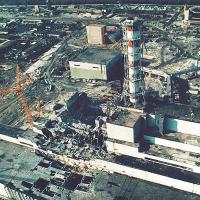
The 1986 disaster in Ukraine is a household name now, after nearly 500,000 people were evacuated or resettled following the massive nuclear contamination of more than 4,000 square kilometres. But despite the frightening history of the area, its ecosystem is doing something remarkable.
“The abundance of large animals around Chernobyl, such as deer, elk and wild boar, matches that of nature reserves in the region – and wolves are seven times as common,” reported NewScientist.com this week.
A study was undertaken to determine the impacts of radiation on the various lifeforms in the area, the largest such effort since the accident occurred nearly 30 years ago.
“Whatever negative effects there are from radiation, they are not as large as the negative effects of having people there,” Jim Smith of the University of Portsmouth told NewScientist.com. “We’re not saying there weren’t radiological effects at all, but we can’t see effects on populations as a whole.”
The technical aspects of the study aside, it is quite apparent that even one of the most devastating man-made accidents of our time couldn’t keep nature down – so long as we stay out of the way.
“The everyday things we do, such as occupying an area, forestry, hunting and agriculture, are what damages the environment,” Smith said.
Photo of Chernobyl disaster by the EDRB
Work like our growing Living With Wildlife campaign is only possible with the support of monthly donors. Please consider become a monthly donor – for as little as $5 a month – and help us create a Canada that is truly humane.

